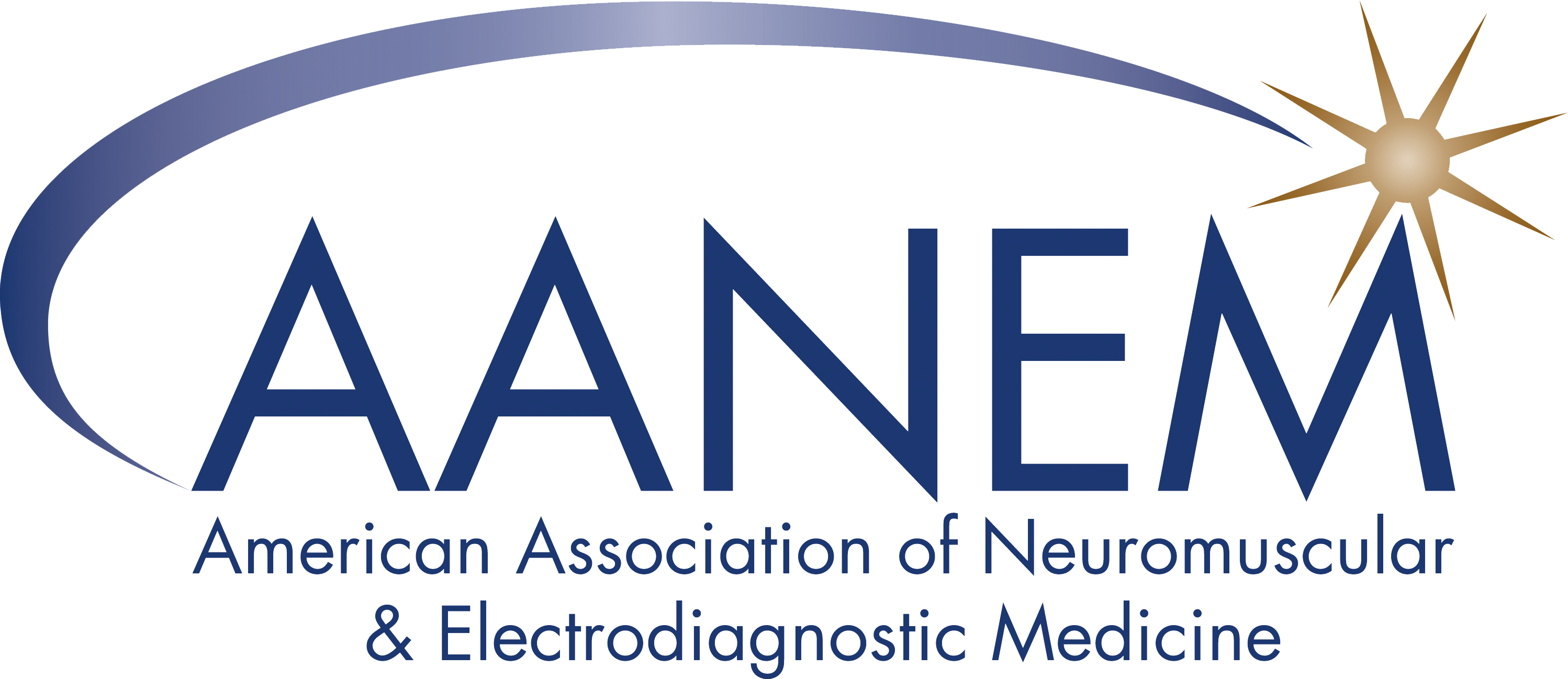Press and Media
View the latest AANEM Achievement Award winners, the American Neuromuscular Foundation (ANF) Abstract Award winners, and the latest AANEM news articles on News Express.
Frequently Asked Questions
Q: When will be content of abstracts be viewable, as opposed to just the titles?
A: The abstract content will be available at the annual meeting during the Poster Hall hours. We do not provide abstract presenter information or slides ahead of time. All available information can be found in the AANEM Abstract Guide online when it becomes available.
Q: How do I reach out to abstract or session presenters for an interview?
A: We do not offer member contact information. To connect with abstract or session presenters, review the AANEM Annual Meeting Program when available. Find the topics of interest and connect with the presenter after their lecture or during their abstract poster session time. Currently there is no interview option for virtual attendees.
Q: When can I share information?
A: The embargo on the abstracts themselves is lifted when they have been published in Muscle & Nerve and online in the AANEM Abstract Guide. However, the additional information beyond what is in the abstract itself is still embargoed.
AANEM requires information that goes beyond that which is contained within the abstract, e.g., the release of data not included in the abstract, discussion of the abstract done as part of a scientific presentation, etc. to be embargoed until the start of the annual meeting. Please see the Abstract Embargo Policy.
Q: Will the Abstract Award Reception feature the best posters?
A: The Abstract Award Reception is a social hour in honor of the abstract award winners where all authors, including award winners, will be available to discuss research.
Q: Original research is ONLY presented as posters, correct?
A: Yes - the research is presented in the Poster Hall via abstract posters.
Patient Safety: Colchicine Toxicity
Question: Which of the following increases the risk for development of colchicine neuromyopathy?
On EDX testing, needle EMG reveals myopathic motor unit potentials in proximal muscles, often with evidence of fibrillations or positive sharp waves. There may also be signs of accompanying axonal sensorimotor polyneuropathy on nerve conduction studies. Muscle pathology typically shows a vacuolar myopathy, often with autophagic vacuoles. The differential diagnosis can include polymyositis, due to the elevated CK levels and signs of irritable myopathy on EDX testing, however this can be distinguished on muscle biopsy and by response to colchicine cessation. Patients improve with discontinuation of colchicine therapy.
- Kuncl RW, Cornblath DR, Avila O, Duncan G. Electrodiagnosis of human colchicine myoneuropathy. Muscle Nerve. 1989 May;12(5):360-4. doi: 10.1002/mus.880120504. PMID: 2725561.
- Ghosh PS, Emslie-Smith AM, Dimberg EL. Colchicine-induced myoneuropathy mimicking polyradiculoneuropathy. J Clin Neurosci. 2014 Feb;21(2):331-2. doi: 10.1016/j.jocn.2013.01.019. Epub 2013 Sep 23. PMID: 24071053.
- Kuncl RW, Duncan G, Watson D, Alderson K, Rogawski MA, Peper M. Colchicine myopathy and neuropathy. N Engl J Med. 1987 Jun 18;316(25):1562-8. doi: 10.1056/NEJM198706183162502. PMID: 3035372.
- Abudalou M, Mohamed AS, Vega EA, Al Sbihi A. Colchicine-induced rhabdomyolysis: a review of 83 cases. BMJ Case Rep. 2021 Jul 21;14(7):e241977. doi: 10.1136/bcr-2021-241977. PMID: 34290008; PMCID: PMC8296791.
- van der Naalt J, Haaxma-Reiche H, van den Berg AP, Hazenberg BP, Molenaar WM. Acuteneuromyopathy after colchicine treatment. Ann Rheum Dis. 1992 Nov;51(11):1267-8. doi:10.1136/ard.51.11.1267. PMID: 1466611; PMCID: PMC1012478.
